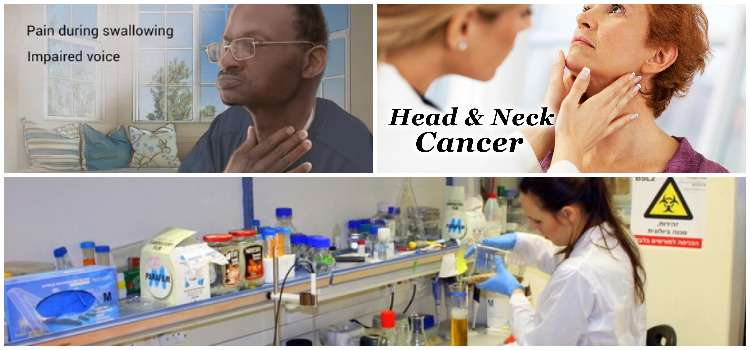
Head and neck cancer includes different malignant tumors that occur in or around the mouth, nose, sinuses, throat, salivary glands, and lymph nodes in the neck.
When a head and neck cancer begins in the salivary glands, it is classified as an adenocarcinoma, or mucoepidermoid carcinoma, or adenoid cystic carcinoma.
Types
Head and neck cancer is differentiated according to the region of the occurrence in the body, namely;
- Laryngeal and Hypopharyngeal Cancer
- Nasal Cavity and Paranasal Sinus Cancer
- Nasopharyngeal Cancer
- Oral and Oropharyngeal Cancer
- Salivary Gland Cancer
Causes
The most important risk factors for head and neck cancers are Alcohol and tobacco use, somewhere around 75% of cases. Also, people who are habitual to both alcohol and tobacco are at greater risk of developing head and neck cancers than people who use either alcohol or tobacco alone.
The most commonly affected head and neck cancer regions are the oral cavity, oropharynx, larynx, and hypopharynx. Various other risk factors include;
- Betel quid (Paan-masala)
- Salted or Preserved foods
- Poor Oral health
- Occupational exposure
- Radiation exposure
- Epstein-Barr virus infection
- Ancestry
Symptoms
- Sore or lump that does to recover
- Red or white oral patch
- Sore throat that does not recover
- Swallowing disturbance
- Hoarseness or change in the voice
- Frequent or unusual nasal discharge or bleeds
- Numbness or weakness in the head and neck region
- Jaw and/or ear pain
- Loosening of teeth
- Unexplained weight loss
- Fatigue
Diagnosis
Oncologists utilize many diagnostic tests and procedures to confirm cancer and its invasion to surrounding body parts (metastasis). Various imaging tests can be performed by the doctors to know the metastasis and learn which treatment procedure can work best.
In many types of cancer, a biopsy is the only sure and trusted way for the doctors to find out and confirm the affected cancer area.
A list of diagnostic options is used by doctors to confirm cancer. A cancer surgeon may consider any of these factors while selecting a diagnostic test:
- Type of cancer
- Signs and symptoms
- Age and Medical condition
- The results of previous medical tests
Tumour, Node, Metastasis (TNM) Staging
A TNM system is a useful tool that helps doctors to find the stage of cancer in terms of location, size, spread to node, and metastasis to other parts of the body.
The results of the TNM system are combined together to determine the particular stage of cancer that helps oncologists and cancer surgeons to work and plan together for the best treatments.
Treatment
If diagnosed and found early, mostly head and neck cancers can be cured.
The primary goal of treatment resides in eliminating cancer and preserving the function of the surrounding organs, tissues, and nerves. Oncologists usually plan a treatment by considering the facts that might affect the quality of life of a patient. The treatment options depend on various factors, such as; the cancer type, stage, side effects, patient’s preference and overall health.
The most common treatment options used for head and neck cancer are surgery, radiation therapy, chemotherapy, and targeted therapy. Surgery or radiation therapy can be used individually or in a combination as a part of a treatment plan for a specific patient.
Usually, cancer treatments can affect speaking, eating, or breathing, so patients may require rehabilitation procedures also.
After treatment of head and neck cancer, it is very important for a person to maintain a regular follow-up care with your specialist doctor to ensure that cancer has not returned again or new cancer has not developed.
